Commercial electric vans are a rare sighting on Australian roads, but things are starting to change. In 2017, the Electric Vehicle Council recorded only 228 electric vans registered in Australia, and they were of only one brand - the Renault Kangoo ZE.
In 2022, the number of registered electric vans in Australia stood at 1,007, according to the Motor Vehicles, Australia January 2022 (First Issue) - an increase of 371% in just five years. More options and government EV incentives are key drivers of this. There is also the fact that electric vehicle manufacturers are improving their vehicles by the day. The current offerings promise more range and capability than ever before.
What's Available?
Here are the electric vans currently available in Australia:
Renault Kangoo ZE from $61,990
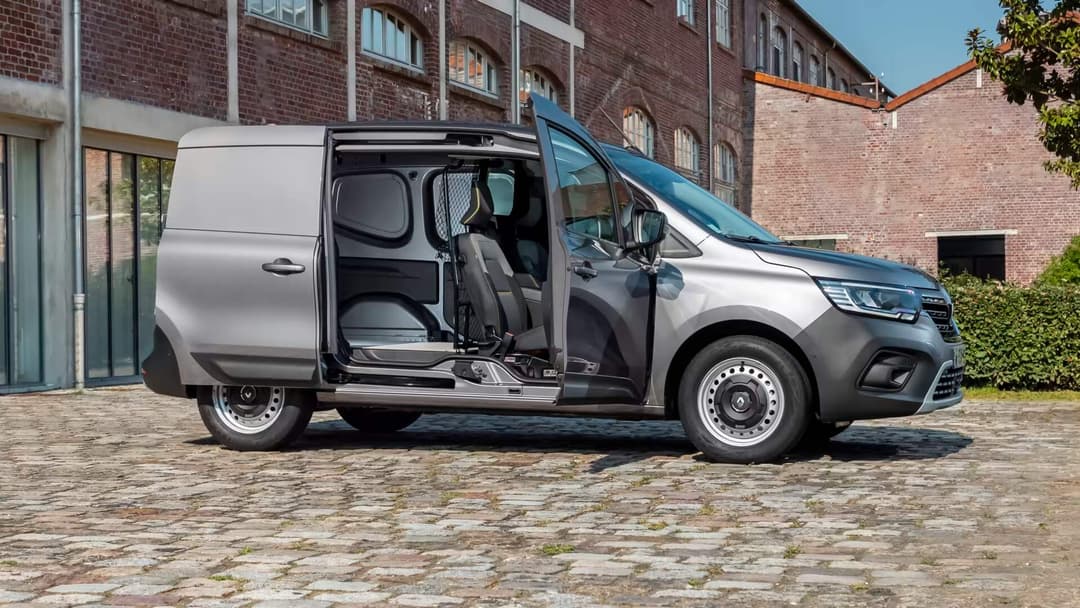
The Renault Kangoo ZE is a trusty workhorse praised for its practicality, affordability, and efficiency. It won the What Van? Van of the Year award and IVOTY award back in 2012 when it was first released, and still gives the more recently released electric vans in Australia a run for their money.
The second generation Kangoo E-Tech is now on sale. The 2024 Renault Kangoo E-Tech will be available in two models - a short wheelbase model and a long wheelbase model. The short wheelbase variant, which has a starting price of $61,990 before on-road costs, has a load area that is 1806mm long. For an additional $2,000 the long wheelbase variant offers a load area with a length of 2230 mm.
This all-electric van is powered by a 90 kW front electric motor that delivers 245 Nm of instant torque. Thanks to this motor, this van can handle payloads of up to 668 kg and towing capacities of up to 750 kg when using an unbraked trailer and up to 1000 kg when using a braked trailer.
It also has a 45 kWh battery - good for up to 285 km of driving range. This battery recharges from 0% to 100% in two hours twenty-five minutes when using a domestic 22 kW AC charger or in one hour twenty-five minutes when using a 80 kW DC charger. However the 80kW DC charging option will cost an additional $1,600.
Also worth noting is that the Kangoo ZE offers an array of safety features such as six airbags, an anti-lock braking system (ABS), and an electronic stability program (ESP).
Renault Kangoo ZE Specifications:
Peugeot e-Partner from $59,990
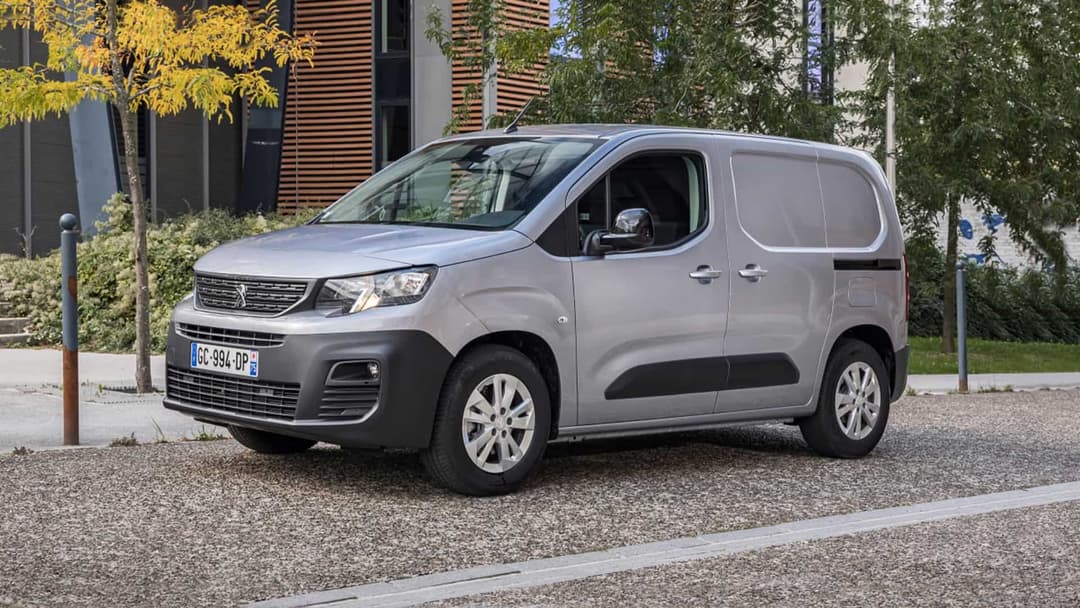
The Peugeot e-Partner was launched in Australia in mid-2023 and is a compelling alternative to the soon-to-be-launched Renault Kangoo E-Tech. In Australia, this van is only available in its long-wheelbase version, which is 5.3 metres long and 1.92 metres wide. It offers up to 3,497 litres of boot space with the rear seats folded down and a maximum payload capacity of 800 kg. In the towing department, the Peugeot e-Partner matches the Kangoo ZE with an unbraked towing capacity of 750 kg.
Powering the Peugeot e-Partner is a 100 kW electric motor that develops 260 Nm of instant torque. This motor can propel this van to 100 km/h from a standstill in just 13.1 seconds. The motor is fed by a 50 kWh battery capable of delivering a claimed WLTP range of up to 258 km. Recharging this battery from 0% to 100% using a 2.3kW domestic electric plug can take up to 24 hours and up to 7 hours 26 minutes when using a 7.4 kW single phase 32A wall box. Also available for this van is 100kW DC fast charging at a public charging station; this option can reduce this van's recharging time to just 30 minutes.
Peugeot e-Partner specifications:
Ford e-Transit from $104,990

Like the petrol/diesel-powered Ford Transit van upon which it is based, the Ford e-Transit is a full-size commercial van that can handle heavy-duty hauling or towing tasks. It is available in middle-roof and high-roof options and only has a rear-wheel-drive, long-wheelbase body style. Both its middle roof and high roof models are 5.981 metres long and 2.258 metres wide; they only differ in height, the former being 2.552 metres high and the latter being 2.79 metres high. This translates to max boot capacities of 11,000 litres in the middle roof models and 12,400 litres in the high roof models. In terms of payload capacities, the middle roof models can haul loads of up to 1,611 kg, while the high roof models can haul up to 1,566 kg. Both models can tow up to 2,000 kg when using an unbraked trailer.
Powering the Ford e-Transit is a rear-axle-mounted electric motor with a peak output of 198kW and 430Nm of torque, which means that the e-Transit is more powerful than its petrol/diesel counterparts. This electric motor draws electric power from a 68kWh usable battery that promises a driving range of up to 307 km when fully charged. Thanks to the e-Transit's 11.3kW onboard charger, this battery can be recharged from 0-100% in approximately 8 hours. The e-Transit is also equipped to accommodate a 115kW high-power DC fast charger, with which this battery can be topped up from 15% to 80% in approximately 34 minutes.
The Ford e-Transit starts at $104,990 for its middle roof models and at $106,490 for its high roof models. Worth noting is that the van is eligible for an AUD$20,000 federal government subsidy and an additional state government subsidy of up to AUD$3,000 in Queensland, New South Wales, and Victoria.
Ford e-Transit specifications:
LDV MIFA 9 from $106,000
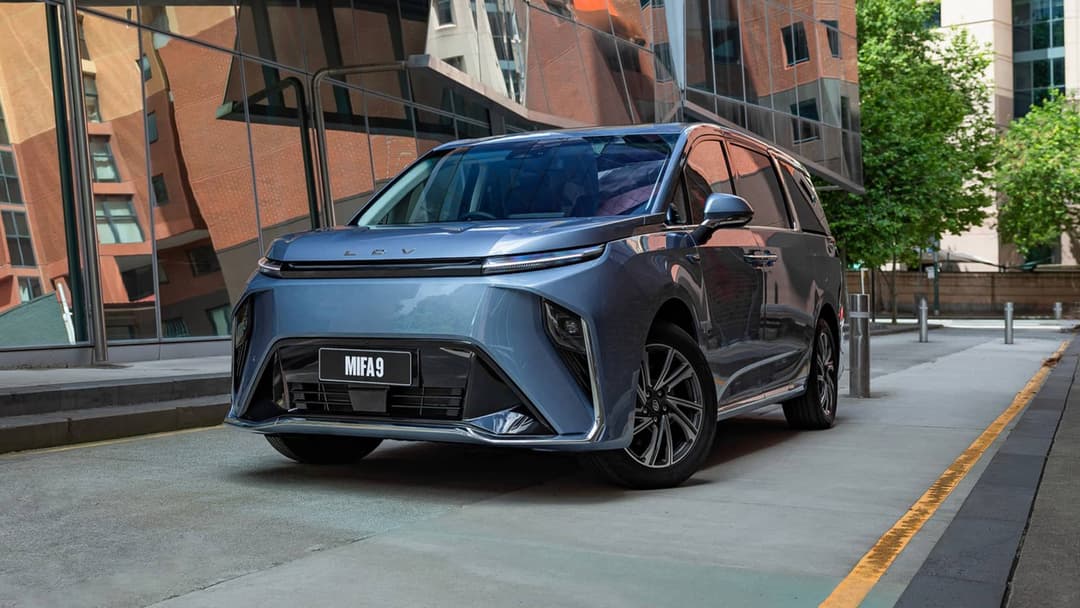
The LDV MIFA 9 is a luxurious, 7-passenger, all-electric people mover that can also double up as a light cargo haulier. It has dynamic styling on the outside with clean, strong lines and sweeping curves. It also had full LED headlights, slick LED daytime running lights, and signature LED rear lights and indicators, all of which are bound to leave a lasting impression.
On the inside, the LDV MIFA 9 offers a leather-swathed interior adorned with wood-grain inlays and tastefully placed metallic accents. Some of the comfort features in this van include 2nd-row captain chairs with built-in tray tables, multi-zone automatic climate control, heated and ventilated 1st- and 2nd-row seats, dual power-sliding rear doors, and much more.
The LDV MIFA 9 is driven by a front-axle-mounted electric motor that develops 180kW and 350Nm torque. This motor can propel this van from zero to 100 km/h in 8.9 seconds. The motor hooks up to a large 90kWh battery that can deliver up to 440 km of range. Using the van's 11.3kW onboard AC charger, this battery can be recharged from 5% to 100% in 8.5 hours when connected to a household AC power outlet. When using its 120kW onboard DC charger, it takes 36 minutes to recharge the battery from 30% to 80%.
LDV MIFA 9 Specifications:
LDV e-Deliver 9 from $99,990
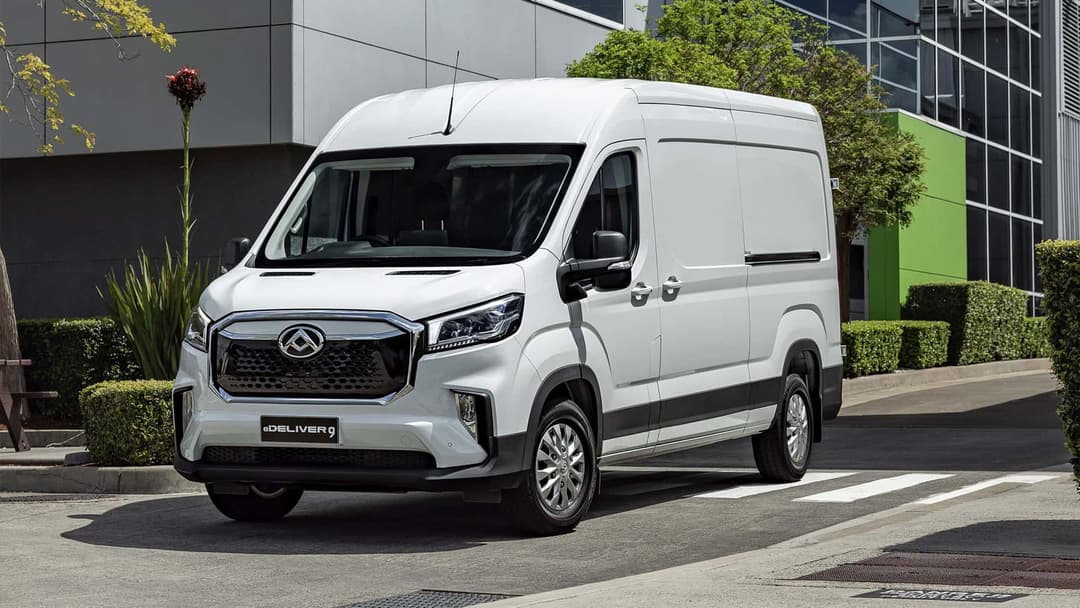
Like the Ford e-Transit, the LDV e-Deliver 9 is based on a conventional, petrol-diesel-powered, full-size commercial van that successfully made the switch to all-electric propulsion. It inherits the cab-chassis, mid-roof, and high-roof configuration options of its petrol-diesel-powered siblings but is only available with a 3.76-metre long wheelbase. The cab-chassis models have a 65kWh battery good for up to 150km of range, while the mid-roof and high-roof van models get a larger 88.55kWh battery that can provide up to 280 km of range.
All three versions have an 11kW onboard AC charger and an 80kW onboard DC charger. When using the AC charger, the cab-chassis battery can recharge from 5% to 100% in 11 hours when connected to a single-phase household power outlet and 6.5 hours when connected to a three-phase public charging outlet. When using the onboard DC charger at a public charging station, the same battery can recharge from 20% to 80% in 36 minutes. The 88.55kWh battery takes a bit longer to recharge in each instance.
All models of the LDV e-Deliver 9 are driven by a 150 kW electric motor that is good for 310 Nm of torque. This motor drives the front wheels. Regarding hauling/towing capacity, the high-roof models offer 12,330 litres of cargo space and can carry up to 1,350kg of loads. The same models can tow up to 1,500 kg when using a braked trailer.
This van is also eligible for an Australian government Clean Energy Vehicle (CEV) rebate.
LDV e-Deliver 9 Specifications:
Mercedes Benz eVito from $89,353

With its mid-size light commercial eVito van, Mercedes-Benz also stakes a claim for part of the Australian commercial van market. The eVito is based on the third generation of Mercedes-Benz's popular, long-serving V-Class van. In this van's prior generations, the 'Vito' name referred to this vehicle's cargo van variant, while the 'V-Class' name denoted its MPV or people mover versions. However, the eVito differs slightly, with its cargo van variant being referred to as the eVito Panel Van and its people mover variant as the eVito Tourer.
The eVito panel van offers two comfortable seats upfront and up to 6,000 litres of boot space at the back. It can also haul up to 1,045 kg worth of loads and tow up to 1,000 kg. Under the hood, it has an electric motor that makes 85 kW and 360 Nm of torque. This motor draws from a 60 kWh battery that delivers an estimated maximum driving range of 262 km (NEDC).
The eVito Tourer gets a larger 90 kWh electric motor good for 421 km (NEDC) but gets a more potent 150 kW/365 Nm electric motor.
In terms of charging times, the Panel Van battery requires 35 minutes to recharge from 10% to 80% using an 80kW DC fast charger; the Tourer battery can take ten more minutes to recharge to a similar degree.
Mercedes-Benz eVito Panel Van / eVito Tourer Specifications:
Asiastar Electric Van from $95,000
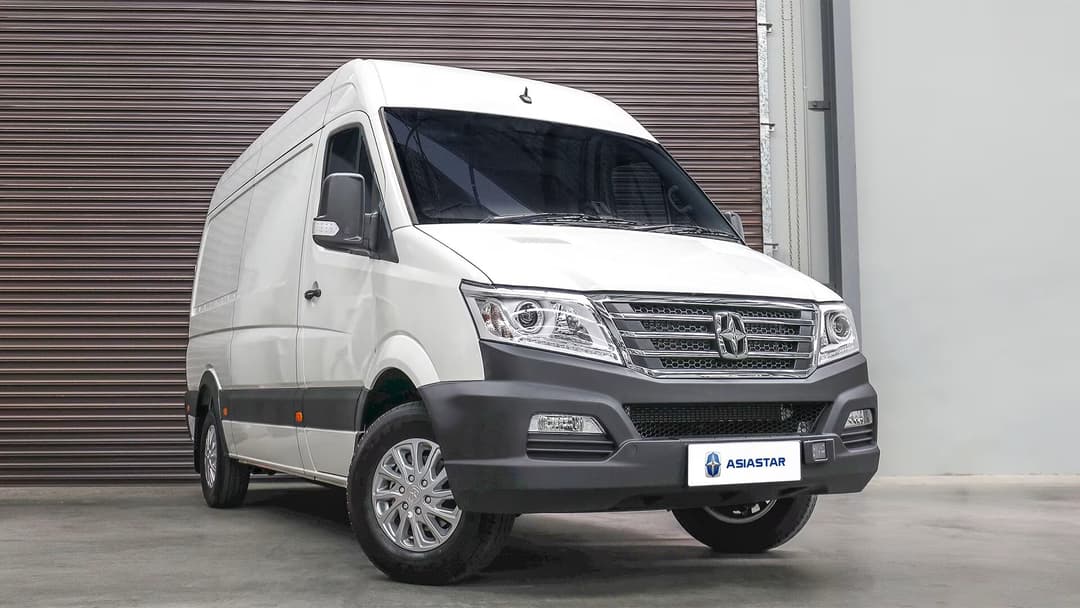
In 2024 a new electric vehicle brand will be joining the Australian market, and will be specifically targeting the electric van segment. Asiastar, a Chinese light commercial vehicle manufacturer, is set to introduce a van, cab-chassis and bus (all of which are electric-powered) to the local market.
The Asiastar electric van will be offered in two models separated by (usable) battery capacities - 70 kWh and a larger 106.5 kWh - and will come with a starting price of $95,000 before on-road costs. The larger 106.5 kWh (usable) battery pack will so far be the largest capacity battery pack within the electric van segment in Austraila and will allow the Asiastar electric van to reach a claimed driving range of 300km.
Asiastar has opted to equip the electric van with its eAxle rear-drive motor which will help improve its payload capacity. With its 140 kW and 390 Nm electric motor, it is able to carry a max payload of up to 1700 kg (1480 kg for the 106.5 kWh variant). The electric van will have a cargo volume capacity of 10,500 L and will feature barn-style rear doors for easy loading and unloading.
It is equipped with multiple safety features such as autonomous emergency braking, electronic stability control and lane departure warning, while also equipped with a rear-view camera. Asiastar will back its commercial electric van with a 5-year/200,000 km vehicle warranty and an 8-year/300,000 km battery warranty.
Asiastar Electric Van Specifications:
What’s Coming?
Renault Kangoo E-Tech Electric
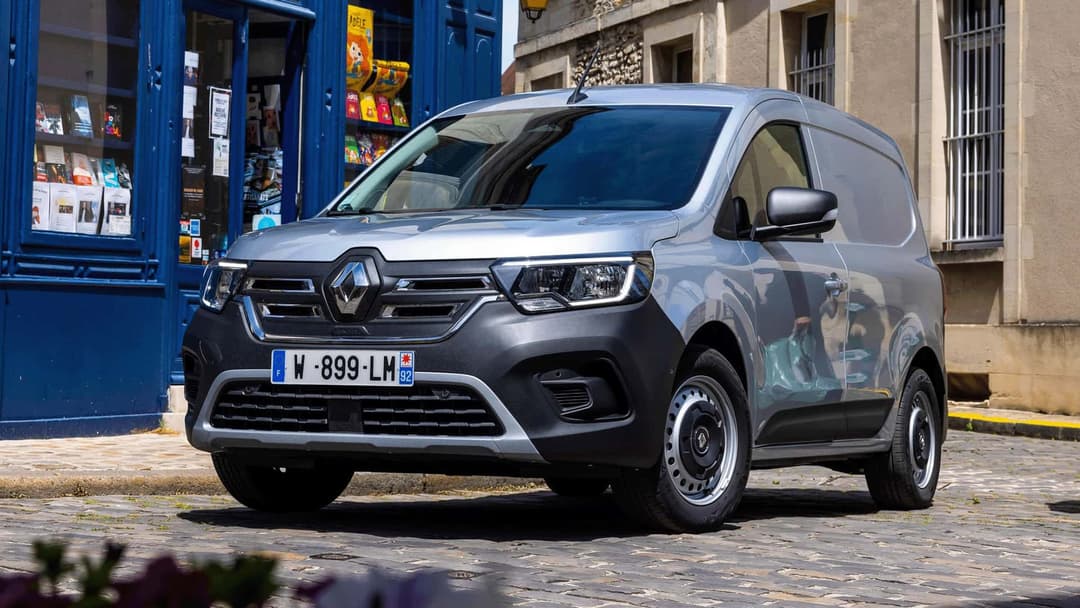
The new Renault Kangoo E-Tech is expected to launch in Australia in late 2023. Developed as a replacement for the long-serving Kangoo Z.E., the Kangoo E-Tech offers several improvements over the outgoing model.
Firstly, it offers a larger 45 kWh battery with a WLTP driving range of 285km (claimed). Thanks to this van’s mode 3-type cable, this battery can be recharged via a 7.4 kW domestic charging point, a 2.3 kW domestic charging point, a 22 kW public charging point, or an 80 kW public fast charging point. When hooked up to an 80 kW fast charging point, this van’s battery can recharge from 20% - 80% in just 40 minutes.
The Kangoo E-Tech’s 90 kW electric motor is also twice as powerful as the Kangoo Z.E.’s motor. It can propel this van from zero to 100 km/h in 11.6 seconds, at par with other vans in this segment.
The E-Tech also offers a more modern interior with an 8-inch touchscreen infotainment system and several advanced driver-assistive safety technologies like lane departure warning, automatic emergency braking, and blind spot monitoring.
This van comes in L1 (medium wheelbase) or L2 (long wheelbase) size options. The latter offers a load volume of up to 4.2 cubic metres, a maximum payload capacity of 764 kg, and an impressive full towing capacity of 1,500 kg.
Renault Kangoo E-Tech Key Specifications
Stay up to date with the latest EV news
- Get the latest news and update
- New EV model releases
- Get money savings-deal
